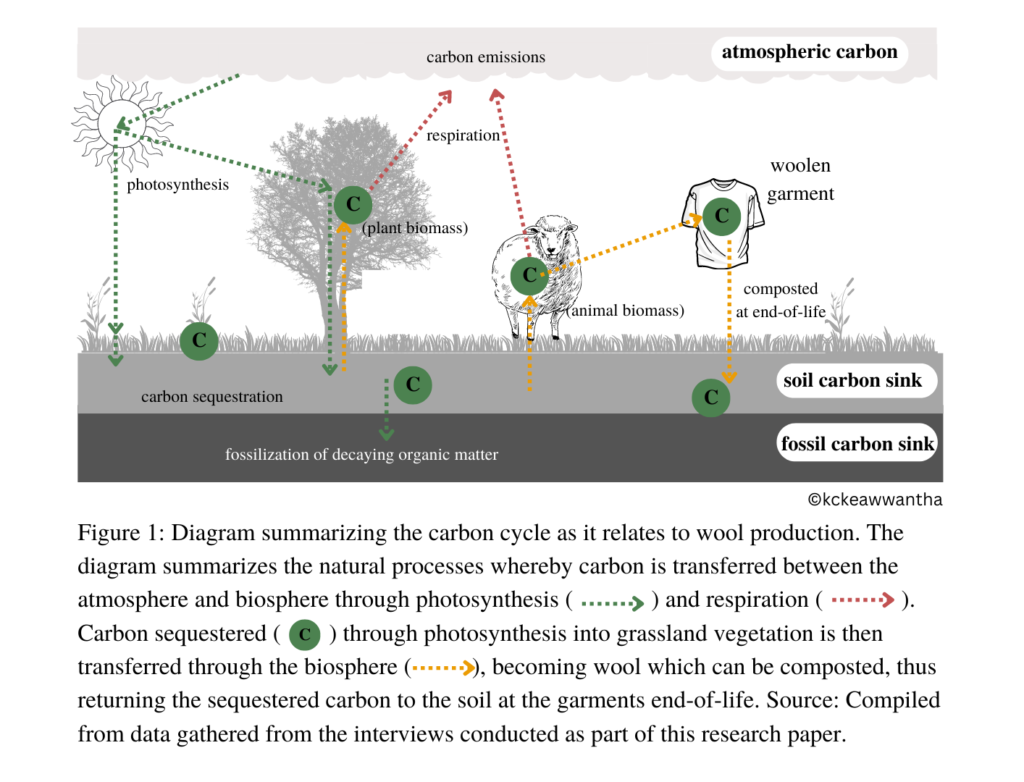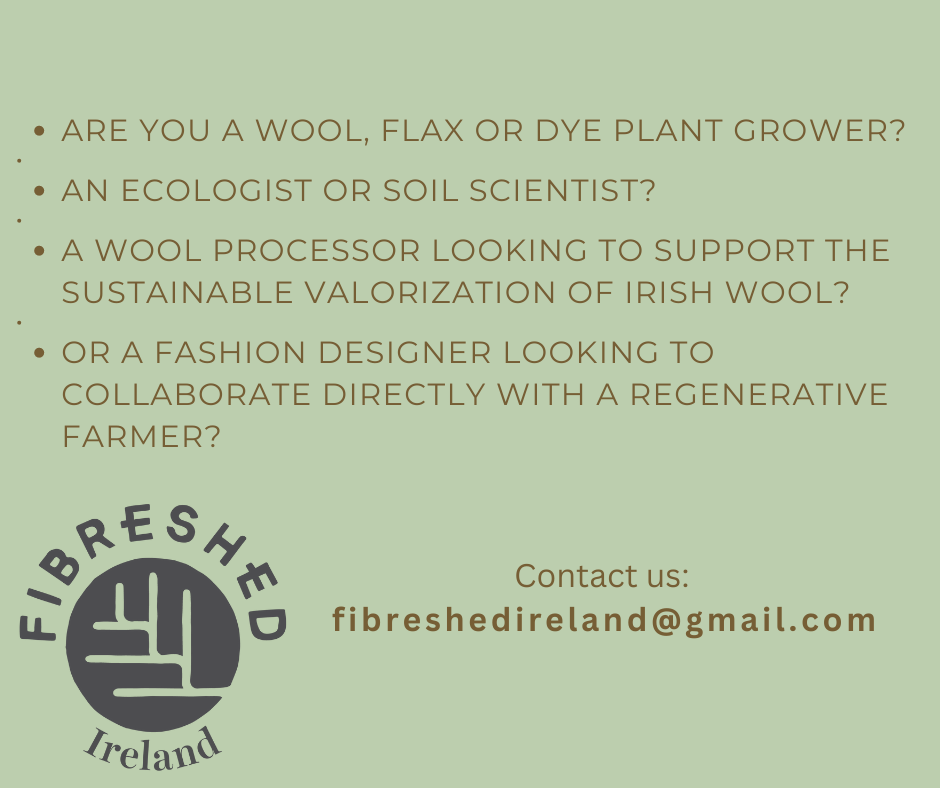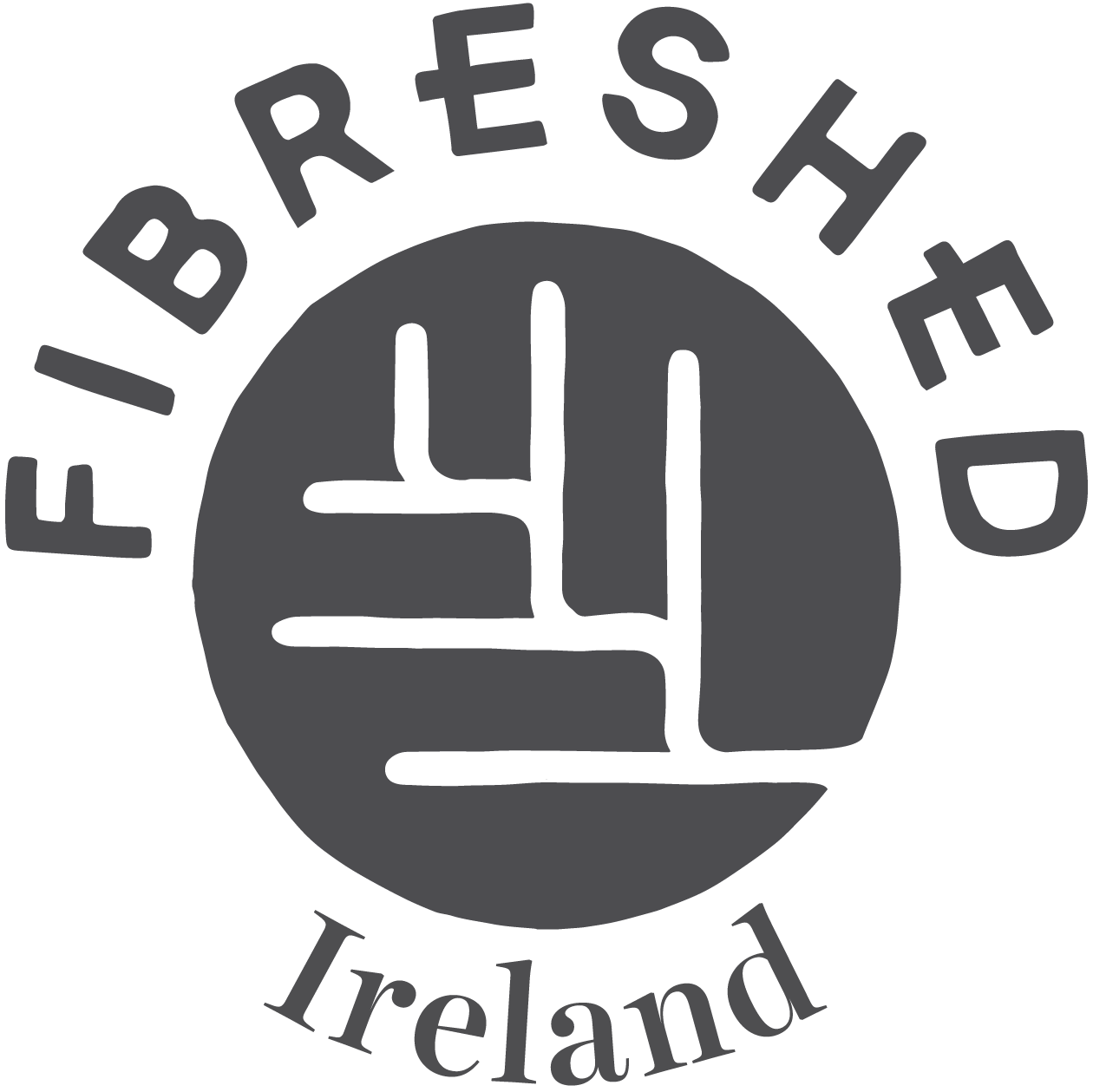
One of the first things we are often asked about when introducing the Fibreshed concept is:
“What has farming got to do with fashion?”
The answer is EVERYTHING… and NOTHING!
Fashion Is An Expression of Culture and Place
The fact that we no longer consider our fashion and our farming as being connected is a poignant reflection of how divorced our modern textile systems have become from the very lands, cultures and traditions which once served to define and shape the textiles which clothed us. Clothing and textiles have always been seen as a defining characteristic of culture across the world – from the Fair Isle knit of the Shetland Islands to the mudmee silk weaving of Thailand’s north-east, the fabrics and styles of the clothes we wore wove together the rich diversity of materials, cultures and elements of the landscapes which produced them.
It is ironic that clothing remains a defining image of different cultures when the reality is, that like so many other aspects of our lives and culture, our clothing is becoming ever more globally homogenized, and ever more disconnected to the landscapes and cultures in which they are produced and worn.
So, what does fashion have to do with farming?
Fashion Had Everything to do with Farming
Traditionally, our textiles have been intimately interwoven with our farming systems. Since people began farming the land, we have been cultivating crops to feed and clothe the community, with evidence suggesting flax was being cultivated in Mesopotamia between 12-8,000BC1. For most of human history, our clothes have been sourced from the natural materials locally available, and were produced using skills, traditions and practices honed over thousands of years. The results were items of clothing fashioned and formed in unique and diverse styles which were made entirely from natural materials.
This all changed in the 1930’s with the invention of the first fully synthetic fibre – nylon2. Thanks to a multitude of factors, including post-war depression and women’s liberation from the house-and-home3, synthetic materials enjoyed huge popularity and quickly grew in production and design.
Fashion Divorces Itself from Farming and Nature
The effects of synthetic fabrics on our textile cultures and consumption cannot be overstated. Clothes are no longer the highly valued items they were, reflecting unique cultural traditions, skills and natural landscapes, passed down through the generations and worn, repaired and shared with pride. Our clothes are now cheaply made items, devoid of any real meaning or deep value, little more than disposable, plastic apparel. And with the rise in synthetics, natural fibres – and the skills and traditions they embody – have been experiencing ever decreasing popularity and value.
The decline in use and value of Irish wool has certainly reflected this trend, exacerbated even further by other, interconnected factors, including the dominance of fibre from the Merino sheep throughout the global wool markets and the closure of much of Ireland’s wool processing infrastructure. With the explosion of ultra-fast fashion over the past 2 decades and its reliance upon the cheap labour markets of the global south and fossil-based synthetic fabrics4, the value of Irish wool, both economically and culturally, has plummeted. Within just a few generations, Irish wool has gone from being a highly valued crop providing a significant income to the farming household, to being little more than an economic burden, with the pitiful price of 20cents a kilo often not sufficient to cover the cost of shearing and transportation for sale.
Irish Wool – Financial Burden or Beacon of Sustainability?
The decline in value for Irish wool has prompted recent research into expanding the market opportunities and applications for local wool and valuable groundwork is being done in assessing the possible avenues for the valorisation of Irish wool5. However, the conversation thus far often lacks the whole-systems perspective necessary to assess new potentials for Irish wool value chains within the wider context of sustainable agriculture and circular textiles. As both agricultural and textile industries are under mounting pressure to reduce their negative impacts6, the role which Irish wool could have in mitigating some of these impacts through the development of sustainable and circular modes of production is an important consideration which should be prioritized alongside its economic potentials.
In accordance with the Paris Agreement, Ireland has committed (at least in theory) to achieving net zero GHG emissions by 20507. This has cast a critical eye over the livestock systems of Ireland and the rest of Europe – giving rise to increasingly polarized debates, from sheep farts and climate change, to veganism and the re-introduction of wolves. Unfortunately, most research to date has lacked the holistic, whole-systems perspective needed to address the multi-sector, interconnected challenges of sustainable grassland agriculture and climate stability. Despite the growing body of research which shows the superior potential to off-set GHG emissions through the sequestration of organic carbon into soils and grassland vegetation8,9, current mitigation strategies to date have remained heavily focused on technological innovations to reduce emissions10,11 (such as feeding sheep seaweed supplements so they burp less methane – which may well be a very good idea, but hardly adequate to solve the impending doom of a climate catastrophe).
A similar lack of whole-systems-thinking is evident in the discussion of sustainable textiles, the definition of which is largely being defined by industry stakeholders to disastrous effect. The ‘go-to’ sustainability index for fashion companies has been the Higg Materials Sustainability Index12, which, due to some very flawed data analysis, a gross lack of transparency in their sources and inappropriate assumptions, resulted in fossil-derived, plastic fibres out-ranking natural bio-fibres on their sustainability scores13. Thankfully, the Higg MSI has been called out for what it is; a glitzy greenwashing façade which allows the fast fashion industry to continue to pump out endless piles of cheap, plastic, disposal clothes14 (but now with inflated price tags tooting various claims of ‘sustainable’, ‘conscious’, and ‘eco’.
The controversy of the Higg MSI has helped to highlight why a profit driven industry should never be allowed to take the lead in defining sustainability15,16. Despite this, sustainability in textile production remains poorly defined, and misaligned with the UN’s Sustainable Development Goals (SDGs). This is especially apparent in regard to natural fibres such as wool17,18.
Wool Is Part of the Natural Carbon Cycle
Wool is a renewable raw material which is part of the natural planetary carbon cycle19, whereby carbon is transferred between the atmosphere and biosphere through the processes of photosynthesis and respiration (see Figure 1). The current globalized production and processing of wool textiles is dominated by the industrialized model of maximizing profits and output, and as such is responsible for many negative environmental impacts, including GHG emissions, deforestation and water stress20. These observations are valid, and are helping to guide discussions on how wool production can become more environmentally sustainable. However, they do not acknowledge the diverse, interconnected role which sheep farming plays in the wider agricultural, socioeconomic and cultural landscapes of rural communities21,22.
Another important consideration to keep in mind, is that current assessments of woolen textiles are calculating impacts based on the industrialized and globalized supply chains. As such, they do not express the potential of alternative production and processing models; models with value chains built upon localized, equitable and regenerative partnerships between the land, the manufacturers and local communities23.

Fibershed Provides an Alternative Framework for Wool
One such alternative model of wool production, which claims greater sustainability and circularity, is the Fibershed framework. Unlike current global textile economies, which have become increasingly centralized and divorced from our communities, our cultural heritage and the natural limits of our planet24, Fibershed model reconnects our textile cultures to the natural cycles of sustainable productivity. It provides a holistic, multi-sector and multi-disciplinary model which reconnects our textile supply to our local landscapes and agricultural communities with respect and equitable partnerships between the ecological, cultural and socioeconomic environs. Additionally, the Fibershed Climate Beneficial™ framework provides a workable model which connects agriculture, textiles and climate targets, aligning them towards a shared vision of sustainable, regenerative and equitable co-production25.
Ireland Needs to Transition to a More Sustainable Model
Currently in Ireland, our conventional agricultural systems need to transition to a more regenerative model which works in harmony with the natural biodiversity whilst reducing emissions and negative impacts. Likewise, our textile supply chains are dependent upon the global textile market which is responsible for a growing list of environmental and social injustices, as well as perpetuating the growing climate crisis26,27. However, the negative impacts of our textiles extend well beyond their manufacturing and use phases; textile consumption in Ireland alone results in a shocking 110,000 tonnes of textile waste being sent to incinerators and landfill every year 28 (that’s over 300 tonnes every day, which is over 30,000 black bin bags of textiles being dumped and incinerated EVERY DAY in Ireland!).
Could An Irish Climate Beneficial™ Program Be Part of the Solution?
In light of these complex, multi-disciplinary challenges we currently face, the Climate Beneficial™ model may hold potential to take a whole-systems, cross-sector approach to meeting climate targets whilst creating a viable, resilient, and regenerative textile supply chain which supports food security and fosters greater economic equity for rural communities. Assessing the potential pathways for Irish wool to contribute to climate mitigation through a localized circular textile economy based on the Climate Beneficial™ model is a vastly complex process, and will involve the cooperative collaboration of stakeholders from sectors which conventionally have had little interaction; from fashion designers and farmers, to climate technicians and knitters.
The promise which an Irish Climate Beneficial™ Wool program holds is certainly promising, but the path towards the re-connecting of our fashion and our farming is far from straightforward. However, with the growing interest in regenerative agriculture, circular textiles and local markets, the potential to unite our farming and our fashion in service of a more sustainable, equitable and authentic way of being is certainly gaining momentum and is worth exploring in more detail.
Kit C. Keawwantha, Nov 2022
This month (Nov 2022), Fibreshed Ireland will be reaching out to our community to form the first ever Knowledge Transfer Group in Ireland which is focused on regenerative fibre and textile production. We hope to bring on board wool farmers and flax growers, cultivators of natural dyes, soil scientists and ecologists, and fibre processors and textile designers!
If you feel that you have something of value to bring to our group discussions, we would love to hear from you – we can’t do this alone and we need and want a growing community of contributors towards defining and implementing a ‘Regenerative Framework for Irish textiles.’

Contact us: fibreshedireland@gmail.com
Would you like to learn more about the Fibreshed Ireland project, Designing a Regenerative Framework for Irish Textiles?
Get your ticket to our live symposium on 18th Nov in Dublin:
References
- Cultivation of Bast Fibres in Prehistory: https://woollyhistoryofbritain.wordpress.com/2016/08/30/cultivation-of-bast-fibres-in-prehistory/
- Nylon the Fist Synthetic Fibre From Coal, Water and Air: https://www.chemengevolution.org/materials/nylon-the-first-synthetic-fibre-from-coal-air-and-water
- Synthetic Threads: https://www.sciencehistory.org/distillations/synthetic-threads
- Synthetics Anonymous: Fashion Brands’ Addiction to Fossil Fuels: http://changingmarkets.org/wp-content/uploads/2021/07/SyntheticsAnonymous_FinalWeb.pdf
- Review of Market Opportunities for Irish-Grown Wool-Based Products. https://assets.gov.ie/228775/bfd187ee-8ea3-40a0-9e6b-d99da3b57147.pdf
- A new Circular Economy Action Plan: For a cleaner and more competitive Europe: https://eur-lex.europa.eu/legal-content/EN/TXT/HTML/?uri=CELEX:52020DC0098&from=EN
- Climate Action Plan 2021: https://www.gov.ie/en/publication/6223e-climate-action-plan-2021/
- Climate Change and Land Use In Ireland. https://www.researchgate.net/profile/Eamon-Haughey/publication/351373849_Climate_Change_and_Land_Use_in_Ireland/links/609535aba6fdccaebd14a242/Climate-Change-and-Land-Use-in-Ireland.pdf
- Carbon-Neutral Wool Farming In South-Eastern Australia. https://www.publish.csiro.au/an/AN15541
- A Global Meta-Analysis of Grazing Impacts on Soil Health Indicators: https://acsess.onlinelibrary.wiley.com/doi/full/10.2134/jeq2017.08.0313
- Teagasc: Methane: https://www.teagasc.ie/environment/climate-change–air-quality/methane/
- Pulse of the fashion industry: 2019 update. http://media-publications.bcg.com/france/Pulse-of-the-Fashion-Industry2019.pdf.
- Harm In The Guise of Doing Good; https://fibershed.org/2022/01/05/harm-in-the-guise-of-doing-good/
- Bates-Kassatly & Baumann-Pauly, 2021. The Great Green Washing Machine, Part 2; The Use And Misuse of Sustainability Metrics In Fashion; https://gcbhr.org/backoffice/resources/great-green-washing-machine-report-part-2final.pdf
- Why You Should Be Paying Attention to What’s Happening With the Higg Index: https://fibershed.org/2022/08/17/why-you-should-be-paying-attention-to-whats-happening-with-the-higg-index/
- Review of Methodological Choices in LCA-Based Textile and Apparel Rating Tools: Key Issues and Recommendations Relating to Assessment of Fabrics Made From Natural Fibre Types: https://www.mdpi.com/2071-1050/11/14/3846
- Kassatly, V. (2022). Unpacking ‘Sustainable’ Fashion. Fibershed. Web; accessed on 7th April 2022 at https://fibershed.org/2022/04/07/unpacking-sustainable-fashion/
- KRUS final report: Enhancing local value chains in Norway. https://oda.oslomet.no/oda-xmlui/handle/20.500.12199/2906
- International Wool Trade Organization; https://iwto.org/sustainability/carbon-cycle/
- Environmental Impacts Associated With The Production, Use, And End-Of-Life Of A Woollen Garment. https://link.springer.com/article/10.1007/s11367-020-01766-0
- Carbon myopia: The urgent need for integrated social, economic and environmental action in the livestock sector. https://onlinelibrary.wiley.com/doi/full/10.1111/gcb.15816
- Harm In The Guise of Doing Good: https://fibershed.org/2022/01/05/harm-in-the-guise-of-doing-good/
- Local, Slow and Sustainable Fashion: Wool as a Fabric for Change. https://link.springer.com/book/10.1007/978-3-030-88300-3
- Building Business Models For Sustainable Fashion : A Case Study Of Norwegian Fashion Companies Focusing On Local Value Chains And Locally Sourced Wool. https://nmbu.brage.unit.no/nmbu-xmlui/handle/11250/2388690
- Fibershed Climate Beneficial Agriculture: https://fibershed.org/programs/climate-beneficial-agriculture/
- Textiles And The Environment In A Circular Economy. https://www.eionet.europa.eu/etcs/etc-wmge/products/etc-wmge-reports/textiles-and-the-environment-in-a-circular-economy/@@download/file/ETC-WMGE_report_final%20for%20website_updated%202020.pdf
- Plastic In Textiles: Towards A Circular Economy For Synthetic Textiles in Europe.https://www.eea.europa.eu/publications/plastic-in-textiles-towards-a
- EPA: Textiles: https://www.epa.ie/our-services/monitoring–assessment/circular-economy/textiles/
